|
| *****SWAAG_ID***** | 644 |
| Date Entered | 22/11/2012 |
| Updated on | 24/11/2012 |
| Recorded by | Tim Laurie |
| Category | Tree Site Record |
| Record Type | Botanical HER |
| Site Access | Public Access Land |
| Record Date | 26/03/2006 |
| Location | Fremington Edge |
| Civil Parish | Reeth |
| Brit. National Grid | NZ 0397 0061 |
| Altitude | 400m down to 305m |
| Geology | Steep talus slope below scarp formed by the Main and Undersett Limestones. |
| Record Name | Relict yew woodland on the slopes below Fremington Edge |
| Record Description | A small yew wood at Cuckoo Hill NZ03970061 (centre) and scattered yew trees on the upper slopes of the escarpment (see photos) together with the relict yews which survive on the limestone scars on Fremington Edge can be considered to provide evidence for the one time existence of species-rich limestone ashwood across the whole of the westerly facing slopes below Fremington Edge. These slopes are now at first glance fairly barren of trees, except for the yews described here and a fair number of very old and isolated hawthorns, for example the ancient thorn at the Hidrake Vein below Fremington Edge photographed below, which have resisted ring barking by starving rabbits. The existence of a number of early lead smelting sites (Lead Bales), including several very large Bale Sites, on the upper slopes indicates that the woodland once present was quickly cleared by early lead smelting operations which required large quantities of wood for fuel. Yews, being resinous, and juniper were avoided by early charcoal burners and may also have been disregarded for lead smelting. |
| Dimensions | See photos |
| Geographical area | Swaledale North Bank Catchment |
| Species | Yew |
| Additional Notes | Most yew trees throw up several stems or trunks from a large and ancient root bole which is invisible, hidden below the limestone scree fragments covering it. It is impossible to guess the age of these trees since whenever they lose a branch they can replace it. They are however of very great age.
Trees on the slopes in later secondary woodland in Lower Swaledale, as at Whitcliffe Wood, near Richmond are usually single stem, maiden trees and never very large. All really ancient yews are multi stemmed as these below Fremington Edge. The most ancient multi stemmed yews survive as stunted trees which grow on the top edge of cliffs. |
| Image 1 ID | 3714 Click image to enlarge |
| Image 1 Description | Fremington Edge from the road to Hurst and the White House | 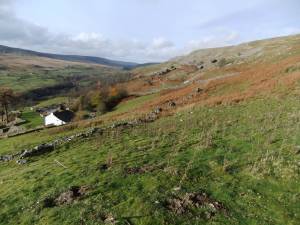 |
| Image 2 ID | 3716 Click image to enlarge |
| Image 2 Description | Two solitary yews on the upper slopes east of Cuckoo Hill | 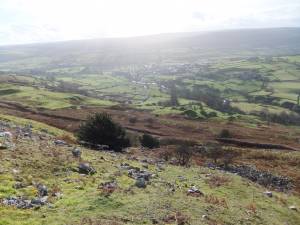 |
| Image 3 ID | 3715 Click image to enlarge |
| Image 3 Description | Two solitary yews on the upper slopes east of Cuckoo Hill | 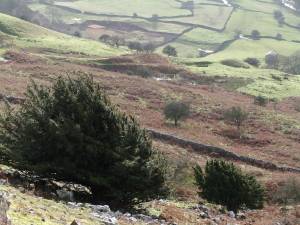 |
| Image 4 ID | 3717 Click image to enlarge |
| Image 4 Description | |  |
| Image 5 ID | 3702 Click image to enlarge |
| Image 5 Description | The relict yew wood fragment at Cuckoo Hill | 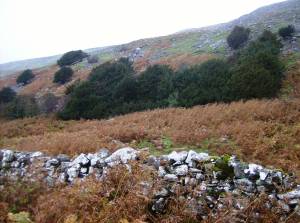 |
| Image 6 ID | 3703 Click image to enlarge |
| Image 6 Description | The relict yew wood fragment at Cuckoo Hill |  |
| Image 7 ID | 3704 Click image to enlarge |
| Image 7 Description | The relict yew wood fragment at Cuckoo Hill |  |
| Image 8 ID | 3705 Click image to enlarge |
| Image 8 Description | The relict yew wood fragment at Cuckoo Hill | 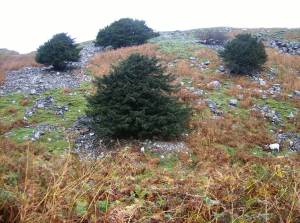 |
| Image 9 ID | 3706 Click image to enlarge |
| Image 9 Description | Detail of the multi stems of the large yews rising from the scree in the dark interior of the wood. | 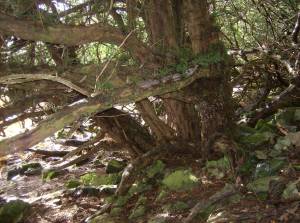 |
| Image 10 ID | 3707 Click image to enlarge |
| Image 10 Description | |  |
| Image 11 ID | 3718 Click image to enlarge |
| Image 11 Description | Ancient hawthorn at the Hindrake Lead Mine, a survivor of previous mixed woodland once widespread on the slopes below Fremington Edge, perhaps. |  |
| Image 13 ID | 3720 Click image to enlarge |
| Image 13 Description | Once these ancient thorns disappear, there will be no record of their existence as evidence for the presence of woodland cut to provide fuel for the lead industry | 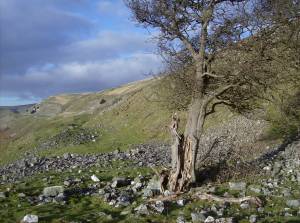 |











